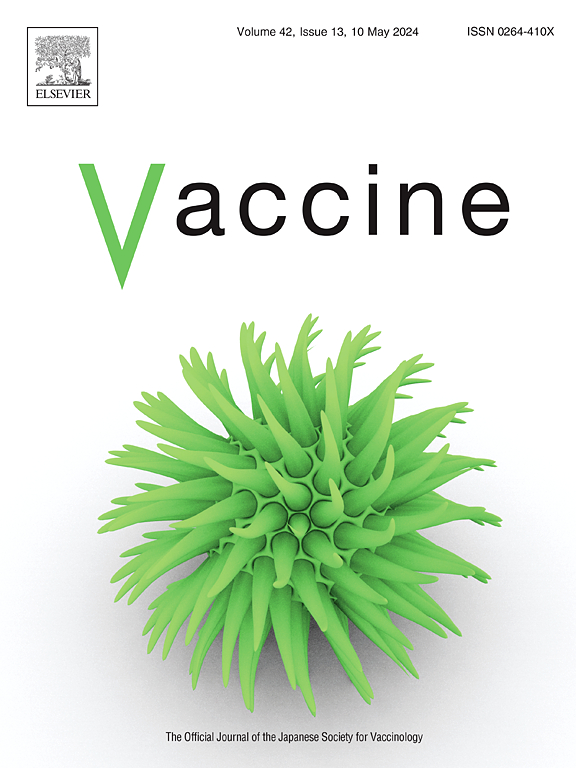加拿大不列颠哥伦比亚省近期有注射吸毒史的人群中COVID-19疫苗的摄取和有效性:回顾性分析
IF 4.5
3区 医学
Q2 IMMUNOLOGY
引用次数: 0
摘要
背景评估疫苗对受COVID-19影响严重的边缘人群的影响,为针对人群的政策提供信息并缩小健康差距,是一项公共卫生重点工作。我们评估了加拿大不列颠哥伦比亚省注射吸毒者(PWID)中COVID-19疫苗的吸收率和有效性。方法采用基于人群的关联数据平台和经过验证的高特异性算法,建立年龄在18-65岁、近期注射用药史(PWID)的人群队列。从2020年12月15日(疫苗推出)到2022年底评估疫苗摄取情况。在三角洲病毒出现/优势期(2021年5月30日至2021年11月27日),使用检测阴性研究设计估计mRNA疫苗对感染和严重后果的有效性。我们将非PWID与PWID在社会人口统计学上进行匹配,以创建一个对照组。结果该队列包括26,581例PWID,其中一个子集(1188例检测阳性病例,169例严重结局)纳入了疫苗有效性分析。到2022年底,接种疫苗的PWID和非PWID比例分别为72.6%和83.0%(第一剂)和64.7%和81.1%(第二剂)。在第二次接种后7-179天内,PWID对感染的有效性为80.0% (95% CI 76.1 - 83.3%),对严重后果的有效性为92.9% (95% CI 88.2 - 95.7%)。非pwid的等效估计为90.0% (95% CI 89.3 - 90.7%)和98.7% (95% CI 98.1 - 99.2%)。结论近期有注射用药史的人群疫苗接种率和有效性较高,但相对于与社会人口学特征相匹配的非pwid人群疫苗接种率和有效性较低。虽然结果表明疫苗可能在减少COVID-19对PWID人群的影响方面发挥了重要作用,但我们的研究结果也强调了潜在的可避免的过度疾病负担。结果应在吸毒者普遍被边缘化的背景下加以解释。研究结果还可能对疫苗推广工作和加强剂的优先次序产生影响。本文章由计算机程序翻译,如有差异,请以英文原文为准。
COVID-19 vaccine uptake and effectiveness among people with recent history of injection drug use in British Columbia, Canada: A retrospective analysis
Background
It is a public health priority to assess vaccine impact in marginalized populations disproportionately affected by COVID-19 to inform population-specific policies and reduce health disparities. We assessed COVID-19 vaccine uptake and effectiveness among people who inject drugs (PWID) in British Columbia, Canada.
Methods
We used a population-based, linked data platform and a validated algorithm with high specificity to create a cohort of people aged 18–65 years with recent history of injection drug use (PWID). Vaccine uptake was assessed from Dec 15, 2020 (vaccine rollout) to the end of 2022. mRNA vaccine effectiveness against infection and severe outcomes was estimated using the test-negative study design during a period of Delta emergence/predominance (May 30th, 2021 to Nov 27th, 2021). We matched non-PWID to PWID on sociodemographics to create a comparison group.
Results
The cohort included 26,581 PWID, of whom a subset (1188 test-positive cases, 169 severe outcomes) were included in vaccine effectiveness analyses. By the end of 2022, the percentage of PWID vs. non-PWID who had received a vaccine dose was 72.6 % vs. 83.0 % (1st dose) and 64.7 % vs. 81.1 % (2nd dose). Vaccine effectiveness within 7–179 days after 2nd dose among PWID was 80.0 % (95 % CI 76.1–83.3 %) against infection and 92.9 % (95 % CI 88.2–95.7 %) against severe outcomes. Equivalent estimates for non-PWID were 90.0 % (95 %CI 89.3–90.7 %) and 98.7 % (95 %CI 98.1–99.2 %).
Conclusions
Vaccine uptake and effectiveness were substantial among people with recent history of injection drug use, but somewhat lower relative to non-PWID matched on sociodemographic characteristics. While results suggest vaccines likely played a large role in reducing the population-level impact of COVID-19 among PWID, our results also highlight a potentially avoidable excess disease burden. Results should be interpreted within the context of the pervasive marginalization of people who use drugs. Findings may also have implications for vaccine outreach efforts and booster dose prioritisation.
求助全文
通过发布文献求助,成功后即可免费获取论文全文。
去求助
来源期刊

Vaccine
医学-免疫学
CiteScore
8.70
自引率
5.50%
发文量
992
审稿时长
131 days
期刊介绍:
Vaccine is unique in publishing the highest quality science across all disciplines relevant to the field of vaccinology - all original article submissions across basic and clinical research, vaccine manufacturing, history, public policy, behavioral science and ethics, social sciences, safety, and many other related areas are welcomed. The submission categories as given in the Guide for Authors indicate where we receive the most papers. Papers outside these major areas are also welcome and authors are encouraged to contact us with specific questions.
 求助内容:
求助内容: 应助结果提醒方式:
应助结果提醒方式:


